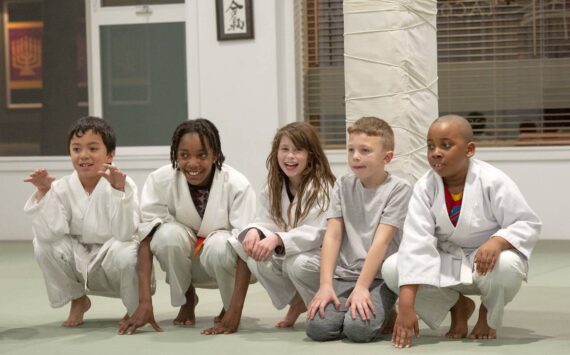“Mention the concept of photo albums to the casual photographer and they conjure up the image of stacks of empty albums beneath processing envelopes full of prints. With the popularity of digital cameras, consumers are quenching their desire for instant gratification and an escape from the guilt of reams of loose, unorganized prints.The ubiquity of the Internet has educated even the most casual users in the power of real-time graphical images.But the digital camera’s viewfinders are still made for only one pair of digital eyeballs.Digital imaging is now becoming viewer-friendly with technologically-glitzy multimedia products, such as set-top boxes, that lead in the convergence of television and photography.QBeo, a North Bend tech company, has developed technology blending photos and interactive TV services. They are making some big steps developing iTV services for broadband, all compatible with a variety of set-top boxes and operating systems.QBeo president and founder Del Clark gave us 10 minutes for 10 questions on consumer applications for digital pictures and the television as an animated picture frame.Q: What’s behind the name Qbeo?A: Q is the physics coefficient for coherent light. Beo is Latin for Bless. Our business is about pictures. And pictures are, in a way, light that blesses. At the time we registered the domain, Qbeo was about the last domain with four-letter combination that you could get as a dot com registration.Q: How did you get involved in Qbeo?A: I am a photographer and a few years ago I worked as an advisor for a number of venture capitalists. I came across a technology that I thought had the potential to really launch digital photography in the consumer space. Like a lot of people, I took what few pennies I had, put them in to the business and we started Qbeo.Q: What does Qbeo do right now and what are you trying to become?A: We’re in the process of building a system that allows subscribers to cable systems to plug a digital camera into a set-top box and have their photographs appear on television, using it as a display mechanism. The power of that is you don’t have to read instructions. You don’t have to know how to run Windows or Explor-er or how to hook up to the Internet. You simply sit down in front of your TV with your family, plug your camera in and watch your pictures. Using your ordin-ary remote control, you create a slide show that shows your pictures off. It effectively turns your TV into an animated picture frame.Q: What else can you do with my photos through Qbeo?A: The second phase of what we’ve done is make it really easy for you to take those photos and get unique gifts made out of them, which is really hard to do with a traditional photograph. With digital photos it’s really easy to actually create a book of those items or put your photo on an apron or a coffee mug. You can do it all from your couch, while you’re eating a bowl of popcorn, using six buttons on your remote control.Q: Grandma can just point and say Put that one on an apron for me.A: I have to admit– I’m a techie. When the Web started to explode I jumped in with both feet just like everyone else. But my mother, who is a grandmother, will never be on a computer. A lot of us view the Internet as being this thing called the Web. But the Web is where computers live, where Web pages live. The Internet, on the other hand, is something that moves information between people. When it’s plugged into the TV, on the system we created, it means my mom can use it, because my mom is comfortable running those six buttons on the remote control. So it means that I get to extend that technology to my mom and allow her to have access to all the power of the Internet–and she doesn’t even know it. All she knows is ‘Wow–my grandkids are on TV. Cool!’Q: Will your set-top box be the host of cable television and all these other interactive features?A: The advantage we have with our technology is we can run on any of the set-top boxes that are deployed by cable operators. And we have agreements with Motorola, Sony, Phillips, Scientific Atlanta that we have ported our technology onto their boxes. The advantage of that to the cable operator is they can have six types of boxes in their network and still offer the same exact offering of services, features and function.Q: Where are the actual images stored?A: They’re stored across the Internet with the broadband connection. We essentially extract those images from the camera through the set top box and store them on a server that’s at the head end. We made the process automated and simple, to work through that set top box so there is no computer involved.Q: What’s your forecast of the adoption of the set top boxes with this type of technology?A: We see really fast growth in some parts of the world. It’s funny. We’re located in North Bend, a little bedroom community outside of Seattle, but our first deployments are going to be in Amsterdam and Vienna. Lots of frequent flier miles.Q: Why are those markets more favorable versus the U.S.?A: What’s driving it is Europe is way ahead of the U.S. in the adoption of the infrastructure necessary for true interactive television. They’ve put in the fiber optic networks. They already have people using interactive television. As a consequence, they are ready for our technology where we can make money right now. I don’t know if you noticed, but in the tech sector, it’s no longer popular to talk about money someday. You have to talk about money you’re making right now.Q: When can we expect to check out our photo album on TV here in Tacoma?A: In about a year and a half, based on projections from Comcast, AT&T and Time-Warner, things will really pick up in the U.S. We’re looking at total users on the order of about 175 million households in the next five or six years. So can I ask that everyone reading this please call AT&T right now and ask them when they will be able to do interactive television photo services, specifically Qbeo!A full audio interview with Del Clark, President of Qbeo, can be heard at: www.webtalkguys.com. Their Web sites are at: www.Qbeo.com and www.Qbeo.tv. “
A digital picture is worth a thousand negatives
Tags: advisor, Amsterdam, AT&T, Atlanta, broadband, cable operator, Cable TV, casual photographer, Clark, Comcast, consumer applications, developed technology blending photos, digital camera, digital cameras, Digital Imaging, digital photography, Europe, fiber optic, fiber optic networks, head, imaging, interactive television photo services, interactive TV, iTV, Microsoft Windows, Motorola, operating systems, photographer, president, QBeo, Seattle, Sony, Sony a Digital Camera, technologically-glitzy multimedia products, United States, Vienna, www.Qbeo.com, www.Qbeo.tv, www.webtalkguys.com






